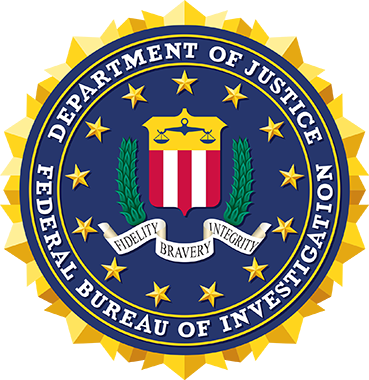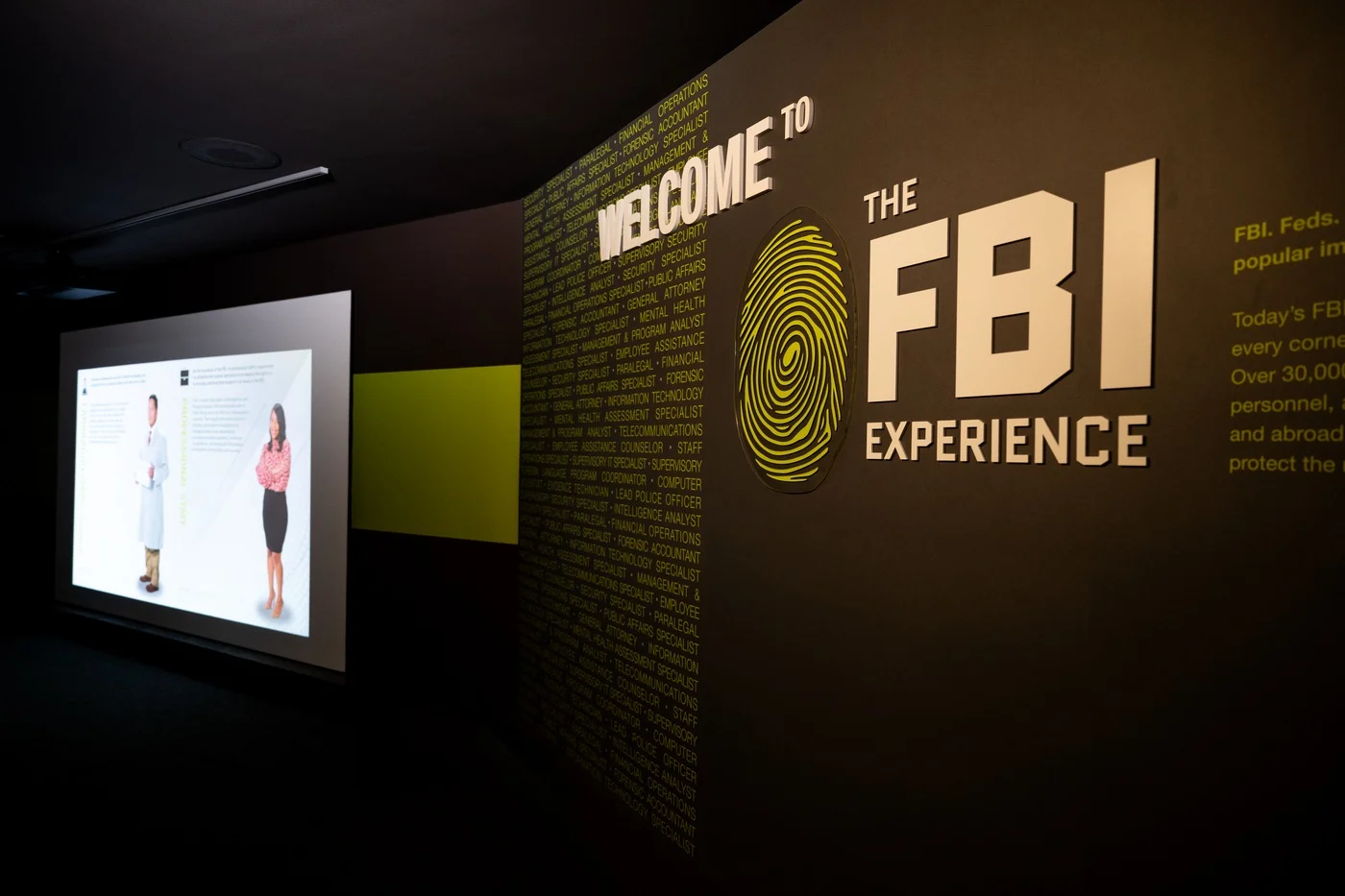Within minutes of joining forces at FBI Headquarters, a team of four recently took down a ring of cybercriminals.
Without taking a beat, team members immediately launched into other investigations. Several devoted themselves to finding miniature surveillance cameras hidden in a "hotel room."
"Is it here? Is it here?" they called to partners. The answer was almost aways, "No."
This cyber investigation and hidden-camera hunt are actually two of several interactive activities in The FBI Experience, a public tour at FBI Headquarters in Washington, D.C. Through multimedia exhibits, content, and artifacts, visitors learn how the Bureau works and about its investigative divisions, laboratory resources, professional occupations, and history.
For most visitors, The FBI Experience is full of information—and surprises.
"I didn’t know agents worked abroad. I thought they were just domestic," said Ivan, a visitor from Chicago. Ivan learned that while most of the FBI’s work is done in the United States, the FBI has about 250 special agents and professional staff who work out of more than 60 foreign offices, covering 180 countries.
Can't visit in person?
You can explore The FBI Experience from home.
Ivan's wife, Lucy, also learned something about the FBI's workforce.
Prior to her visit, she thought only special agents worked at the FBI. However, of the roughly 36,000 people who work for the FBI, only about 13,000 are special agents. The rest are professional staff who work as intelligence analysts, human resources professionals, and scientists and in dozens of other positions. "That, I didn’t know," Lucy said.
After finishing the interactive cybercrime game, a young visitor from Florida offered his own revelation: "I learned that it's important to find everyone involved in the crime, not just the main guy," said 12-year-old Brantley.
The FBI has long captured the public's attention, permeating pop culture. The FBI Experience gives the American public the chance to see and learn about the storied institution up close.
"This gives it a different perspective," said Chandra, who recently visited with her husband and two sons from rural Indiana. "It lets you know that some of the stuff on the shows is real, and some is fake."
The FBI Experience opened in 2017 as the latest version of a tour reaching back to the late 1930s. Initially located in the Department of Justice, the tour moved to FBI Headquarters when it opened in 1975. It quickly became one of the most popular attractions in Washington.
Part of that old tour wound its way through the Laboratory Division, where visitors could watch technicians at work. When the Lab moved to Quantico, Virginia, in 2002, the FBI closed the tour for renovation and to address security concerns.
Visiting The FBI Experience
Visitors to the old FBI tour lined up outside. Today, all visitors must make reservations through their congressional representative or U.S. senators at least four weeks in advance. Individuals, families, small groups, and schools are encouraged to visit.
Tours are self-guided. Visitors can move at their own pace and can pose questions to the docents stationed throughout the space. Many docents are retired special agents or other FBI personnel.
"It's amazing what people don't know about the FBI," said Ford Cole, a retired special agent who works on the tour.
Docents are happy to talk to visitors about their own experiences. "They’re always curious about what the training is like and where agents go after training," Cole said.
Evidence from real FBI cases is positioned throughout the space, including items from each of the 9/11 crash sites and from terrorist leader Osama bin Laden's compound.
Other items include the phone bugged at the Watergate Hotel in 1972, and guns seized from gangster John Dillinger and his gang sit in a case nearby. Spy gear is featured in several exhibits.
A desk from former FBI Director J. Edgar Hoover’s New York Office is a popular stop, just around the corner from one of the original ledgers the FBI used to track its Ten Most Wanted Fugitives.
Visitors can follow the steps agents take when solving a bank robbery, learn about the importance of forensic science, and see the firearms and specialized tools used by the FBI Hostage Rescue Team and SWAT teams in the field. Agents can sometimes be seen at the indoor shooting range, either to demonstrate firearms or as part of their quarterly qualification.
Photos of agents and professionals who died in the line of service—including those who died from exposure to toxic air during 9/11 response or recovery efforts—adorn the Wall of Honor, a somber reminder that keeping the nation safe can come at a heavy cost.
With more than 100 years of FBI history to draw on, the staff of The FBI Experience has carefully curated a space with enough information, items, and activities to appeal to almost anyone.
The FBI cordially invites the public to come to Headquarters and live The FBI Experience.













